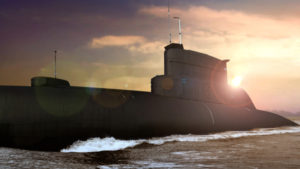
Russia’s Shkval Supercavitating torpedo could affect the balance of naval warfare. It’s a game-changer, and the U.S. has nothing like it in its arsenal. Kyle Mizokami of The National Interest tells us that, “a 200 knot torpedo is a very attractive capability, and as naval competition heats up in both the Atlantic and Pacific Oceans, we may see even more navies adopting supercavitating designs and adjusting their undersea tactics accordingly”. He writes (abridged):
Imagine the sudden revelation of a weapon that can suddenly go six times faster than its predecessors. The shock of such a breakthrough system would turn an entire field of warfare on its head, as potential adversaries scrambled to deploy countermeasures to a new weapon they are defenseless against. While a lull in great power competition delayed the impact of this new technology, the so-called “supercavitating torpedo” may be about to take the world by storm.
One of the most innovative underwater weapons developed by the Soviet Union was the VA-111 Shkval (“Squall”) supercavitating torpedo. Highly classified, Shkval was virtually unknown before the end of the Cold War and only became common knowledge in the mid-1990s. Powered by a rocket engine, it was capable of astonishing speeds of up to 200 knots an hour. But in a world where physics ensured most ships and underwater weapons topped out at 50 knots, how did Russian engineers accomplish such a breakthrough in speed?
Traditionally, torpedoes use propellers or pumpjets for propulsion. Shkval, on the other hand, uses a rocket engine. That alone is enough to make it fast, but traveling through water creates major drag problems. The solution: get the water out of the path of the torpedo. But how, exactly does one get water of the path of an object in the middle of an ocean?
The solution: vaporize liquid water into a gas.
Shkval solves this problem by diverting hot rocket exhaust out of its nose, which turns the water in front of it into steam. As the torpedo moves forward, it continues vaporizing the water in front of it, creating a thin bubble of gas. Traveling through gas the torpedo encounters much less drag, allowing it to move at speeds of up 200 knots. This process is known as supercavitation.
Read the full article here.



